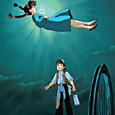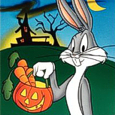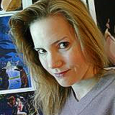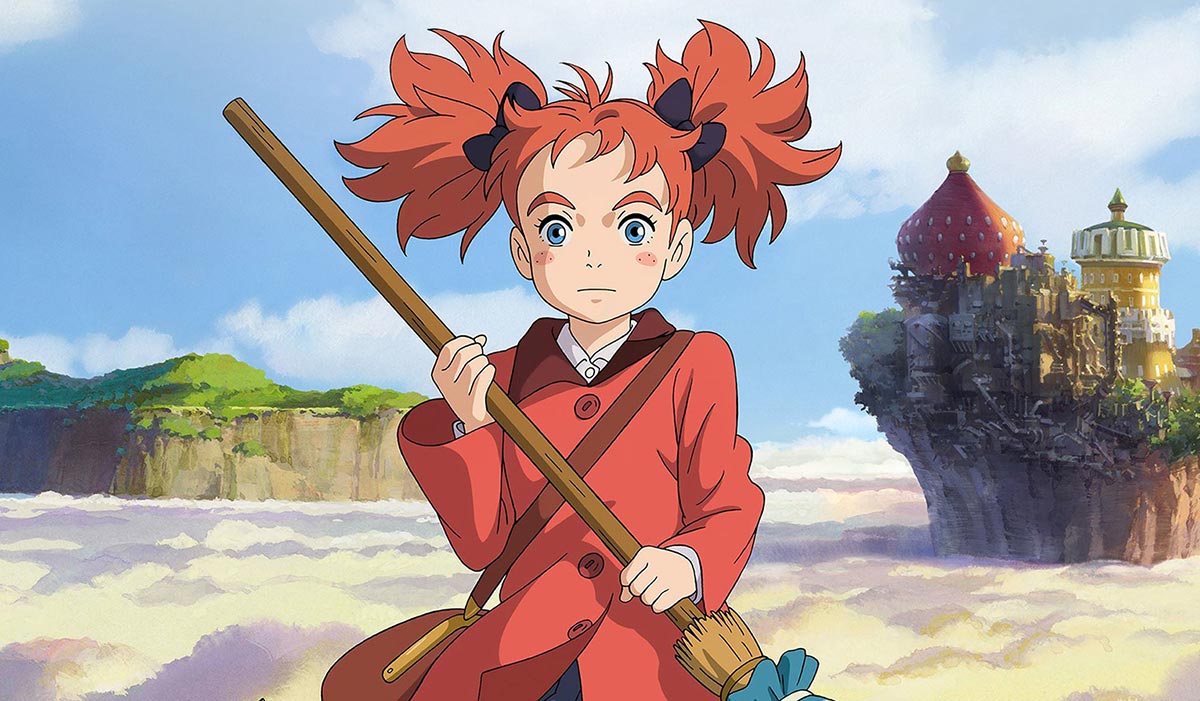Studio Ghibli (2004), Buena Vista Home Entertainment (May 21, 2013), 1 Blu-ray + 1 DVD, 119 mins, 1.85:1 ratio, 5.1 DTS-HD Master Audio, Rated PG, Retail: $39.99
Storyboard:
A girl transformed into an old woman joins a new “family” consisting of a young wizard, a small boy, and some magical companions. As war escalates around them, Sophie discovers the secrets behind the identities of those around her, a love she never expected for herself, and a path towards becoming young again.
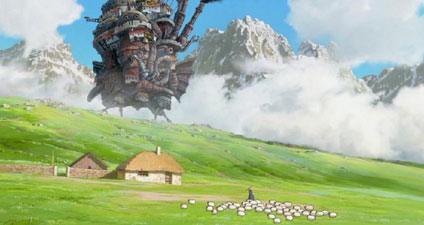
The Sweatbox Review:
Of all the Studio Ghibli films, I may find Howl’s Moving Castle the most confounding. In so many ways, I absolutely love it— the interesting characters, the astonishing artistry, and the superb imagination on display all make for a unique and thrilling experience. On the other hand, after what are now three viewings over the years, I still can’t quite figure out just what the heck the plot is all about. While we are all expected to bow before the genius of director Hayao Miyazaki, I’m afraid that I need to point out that he sometimes doesn’t have much interest in actually having his films make sense. Even in the Blu-ray’s bonus features, Pixar member Pete Docter mentions that Miyazaki is much less concerned than the Pixar crew about having story points flow organically and understandably; and while Docter finds that somewhat admirable, it sure bugs me. There’s no excuse for it, either, as this film is based on pre-existing book, with already-established characters and plotting.
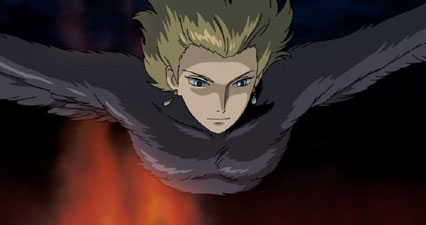
However, my misgivings really only concern the final moments of the film. The rest is amazing.
British author Diana Wynne Jones’ Howl’s Moving Castle was first published in 1986. Though it was not all that recognized at the time, it grew in stature over the years and was given a Phoenix Award two decades later to recognize how popular it had become over the years. When Miyazaki adapted the story, he did change a number of plot points, with which the author was reportedly unconcerned. After all, it’s two different mediums, it’s Miyazaki’s film, and all that. We don’t have to go into the details from the book here, but the set-ups are quite similar between novel and film. In each, a young lady from a fictional place is turned into an old woman by the Witch Of The Waste. In the book, it is because the girl, Sophie, is mistaken for her younger sister, who had insulted the Witch. In the movie, it seems to be due to Sophie’s brief association with the wizard Howl, who had rescued her from two inappropriately forward military officers and some black goo monsters.
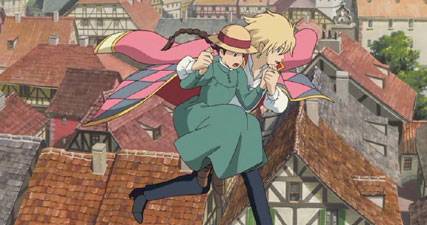
Sophie is naturally quite upset by her predicament, which seems particularly unfair since she barely knows Howl. If the Witch was made to be jealous, it would appear quite unjustified. Nevertheless, Sophie feels forced to flee the town, eventually meeting a somewhat-living but mute scarecrow she nicknames Turniphead, before coming across Howl’s castle. To call it a castle, though, is a disservice. Howl’s home is a magical wonder, an animated home made of shifting metal sheeting and odd parts, that traverses the land and is run by his friend, a fire demon named Calcifer. Sophie befriends the little demon, and they make a deal: Calcifer will help her by removing the spell that keeps her old, if Sophie is able to break the spell that keeps Calcifer bound to Howl. Why are they bound together? Well, that’s one of those points with which the film doesn’t really bother to elaborate. There’s a hint at the end, but it doesn’t make much sense if you haven’t read the book. It “kinda” makes sense, but… not really. Maybe the Japanese understand these mystical things better. Suffice it to say that Howl and Calcifer are stuck with each other for most of the movie.
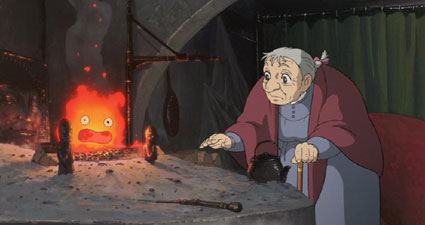
Sophie, Howl, and Calcifer, along with Howl’s boy assistant Markl, and even Turniphead, become a family over the course of events. Those events involve a brutal war being fought over the disappearance of the kingdom’s prince. (His disappearance is also “just kinda” explained, in a hurried wrap-up at the end.) Howl is a pacifist, and does what he can to disrupt the war effort from both sides, by taking a bird-like form and interfering with the operation of fighter aircraft. Meanwhile, the king has requested that all wizards report to the palace for war duty. This is especially tricky for Howl, who keeps more than one identity in more than one town. His castle, you see, has a magic door that opens up in different locales.
As much as Howl insists he doesn’t want to be involved in the war, he sure does go out of his way to engage the soldiers. So, why doesn’t he want to be more directly involved? Much of that has to do with Suliman.

There’s something happening between the Witch, Howl, and the king’s chief sorceress Suliman. Again, relationships are hinted at, or even mostly explained, without quite becoming blatant. Sure, Howl was a pupil of Suliman’s, but there is some antagonism and distrust there. The source of Suliman’s motivation for how she treats both the Witch and Howl remains under-explored. And does Calcifer fit into all that, or not? (I don’t think so, but for a while, it seems likely.) One simply gets the sense that there’s more story than what we are being told, and what we are told is confusing. Sometimes that can be okay, but in this case it just feels like weak storytelling. I don’t necessarily like being “spoon-fed” plot points either, but it’s annoying when you get the sense that a filmmaker just can’t be bothered with making things clear for his audience. It’s like he knows something we don’t and doesn’t realize he hasn’t told us yet… or doesn’t actually care.
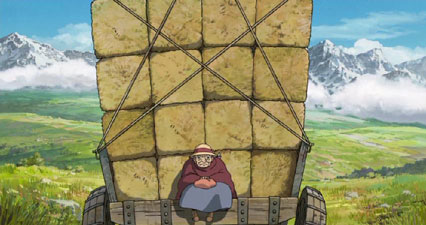
Knowing the book only helps so much, too, as so many details are changed. The book has two sisters for Sophie, who each figure strongly in the plot, and the Suliman of the novel is a male wizard who has disappeared— not a sorceress whose machinations in the film are kept a bit too mysterious. The Calcifer issue is better described in the book, which may be the best reason for reading it if you wish to better appreciate the movie.
For all the movie’s faults, it is difficult to avoid recommending it. That’s what’s so confounding. By the end of the film, I feel frustrated, but for most of it I am fully in love with it. The uniqueness of the story, the inventiveness of the visuals, and the complex characterization make this a terrific film for all ages. One word keeps coming to mind when I watch it: “astonishing.” There is so much going on in the animation, and the imagination on display can be astounding at times. There’s one visual motif I particularly enjoy: having Sophie become younger whenever she expresses feelings for Howl, beautifully showing the love that emerges between them. It’s just too bad that the ending of the film shows just how murky the plotting actually is, when it fails to deliver on its assumed promise of explaining everything we have been viewing. Suddenly, things are resolved, the war is over, and we go, “huh?”
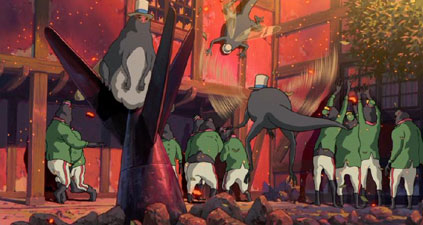
Sigh. So much promise, and this film trips at the finish line. Splat.
It’s not the only Miyazaki film to confound me (I still don’t really get why that pilot is a pig in Porco Rosso), but this is the most frustrating case. Still, most of the film is so far beyond the typical animated film, in terms of creating a compelling story full of interesting characters and wonderful visuals, that I can mostly forgive it.

Is This Thing Loaded?
The film’s Original Storyboards are presented in their entirety, for those that have the stamina to watch the entire film that way.
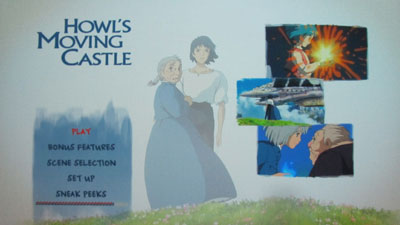
The Behind The Microphone (9:01) video shows the English language cast at work. I always find these featurettes a little disingenuous, given that we rarely get a look at the Japanese cast. Though everyone seems reverential enough, there’s still a sense that “Hollywood made Miyazaki’s film even BETTER!”
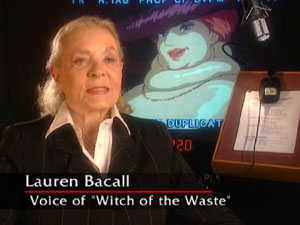
The Original Japanese TV Spots And Trailers (12:06) remind us that this film is, indeed, native to Japan. You may watch these with or without English subtitles.
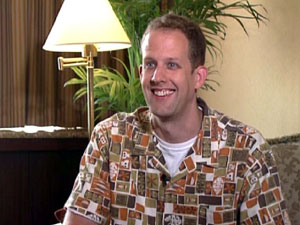
An Interview With Pixar Animation Studios Director Pete Docter (7:22) isn’t as out-of-place as it might first appear, as Docter directed and supervised the English dub for Howl’s Moving Castle. It is, though, at its heart a puff piece about how great Ghibli is, and how awesome we should find the film, once we get to see it in the compromised English translation. Again, this piece would work fine if there were actual “making of” featurettes about the original production, to place things in a better context.
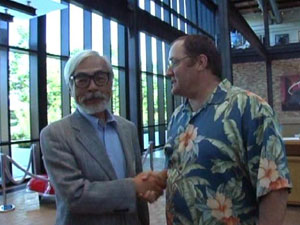
Hello, Mr. Lasseter: Hayao Miyazaki Visits Pixar Animation Studios (16:28) is here because the event took place around the time of the film’s U.S. debut. It’s actually a fun look at the historic occasion of Miyazaki visiting Pixar, including much hand-shaking and exchanging of gifts.
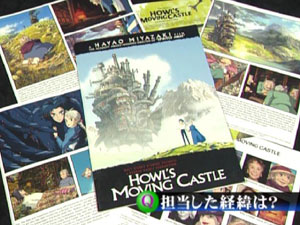
The Blu-ray’s Previews promote the upcoming Blu-ray release of The Little Mermaid, the theatrical release of Monsters University, and the direct-to-video Iron Man/Hulk: Heroes United. Further Sneak Peeks from the menu offer ads for Disney Movie Rewards, the Disney Infinity game, Radio Disney, and the Many Adventures Of Winnie The Pooh Blu-ray.
Except for the storyboards and the new Trailers, all of the special features are also on the DVD.
Case Study:
Just like the My Neighbor Totoro Blu-ray released the same day, this set includes a new Blu-ray, plus the first disc of the previous two-disc DVD (the disc art and contents are exactly the same as before). Each disc fits into a holder on either side of the standard Blu-ray case, and there is a Disney Movie Rewards insert inside as well. The slipcover is tastefully embossed only in the lettering, and the spine carries on the golden motif established by the DVDs of three years back.
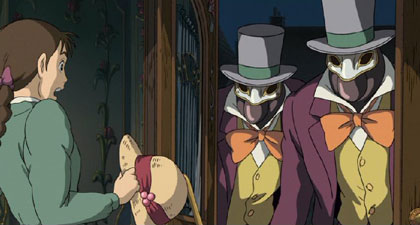
Ink And Paint:
I don’t think anyone will fail to be impressed by the high definition transfer here. This is a visually rich film, and the standard DVD always felt like an unworthy placeholder until the film could get a Blu-ray release. Having taken a few years, we finally get our reward: an impeccable, gorgeous transfer that only makes the visual impact of the film even greater. There’s no room for criticism here, as far as I could see, we great detail and rich colors. Whether viewing the intricate details of the castle, the charming goings-on of a sunny town, or the horrors of war, the transfer never disappoints.
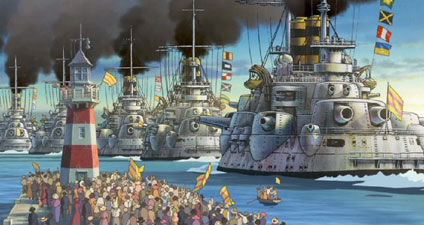
Scratch Tracks:
Your choices here are to listen to the film in full lossless sound in either English or Japanese, which each get 5.1 DTS-HD Maser Audio tracks. Both tracks offer crystal clear sound and good directional effects, from the ambient sounds of the plains to stunning air battles. The English dub is pretty decent, though I’m guessing that most will find the Japanese actors more fitting. (Billy Crystal’s Calcifer seems particularly out of place, though he gives a good performance. But then, Lauren Bacall made a pretty good Suliman.) Still, this is a case where Japan isn’t the setting, with the movie appearing to be set in a European country (Howl was actually Welsh in the book), so an English-language cast doesn’t seem out of place. Still, the English subtitles reveal small changes made from the original Japanese in the English dub, and I prefer to watch the movie in its original language. A French 5.1 Dolby Digital track is also here. English captions and French subtitles are offered as well.
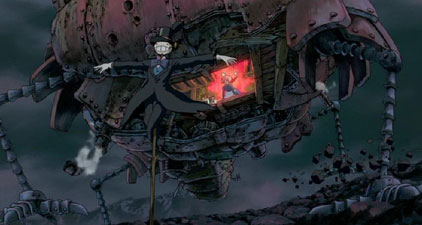
Final Cut:
Those that unapologetically love this film can seemingly ignore the fact that the plotting is obtuse, and forgive the lack of a fleshed-out story that confuses when it should be busy explaining itself. I can’t blame them, as it is easy to be dazzled by the on-screen animation wizardry. For most of the film’s two hours, I too find myself fully enraptured. In the end, I give the film very high marks for its strong points, but can’t forget the bad taste it leaves in my mouth for days afterwards. If you look at the score below, you’ll probably be surprised, considering my strong words. This really is an amazing movie; it just has a few issues that detract, when things could have been easily fixed in the scripting stage. If you already adore this film unreservedly, I don’t wish to change your mind; I can only tell you how I feel. Everyone should find this a worthy hi-def upgrade, with a beautiful picture and strong sound, though the supplements lack much of direct interest unless you like watching two hours of storyboards.
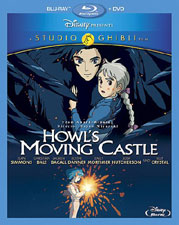 | ||||







